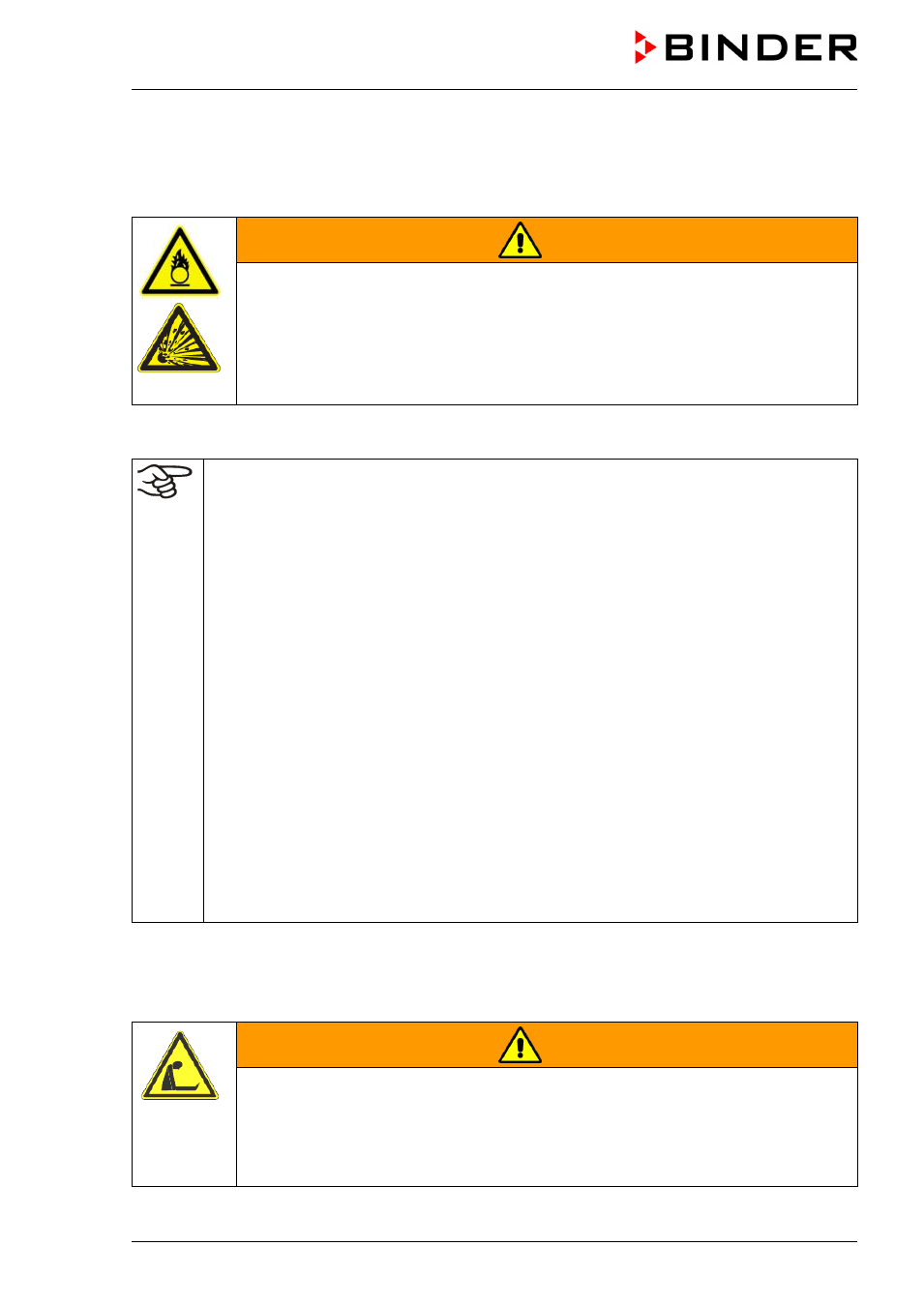Warning – BINDER CB 60 User Manual
Page 17

CB (E6) 09/2013
Page 17/144
Unit with O
2
control: Notes on handling oxygen (O
2
)
Oxygen (O
2
) is colorless and almost odorless and therefore practically imperceptible. It promotes burns,
which can proceed explosively. There is a fire hazard for flammable oxygenated materials, e.g. clothes
and hair. O
2
is heavier than air and may accumulate in low-lying areas.
WARNING
High concentration of O
2
(> 21 % O
2
).
Fire and explosion hazard through contact of combustible materials with O
2
.
Risk of burns and other injuries.
∅
Do NOT set up units in non-ventilated recesses.
Ensure technical ventilation measures.
Observe the relevant regulations for handling O
2
.
Take appropriate measures to prevent oxygen enrichment and fire and explosion hazards in areas where
oxygen enrichment is possible.
General information for safe handling of oxygen:
•
Make sure training of personnel on hazards of oxygen enrichment and necessary safety
measures.
•
Make sure adequate labeling of all oxygen equipment and facilities.
•
Make sure gas tightness of all gas connections by checking them for leaks (e.g. with leak
spray or diluted soap solution).
•
Close the main valve of the source of oxygen after work when not using the chamber.
•
Never lubricate O
2
equipment with oil or fat. Use only materials and spare parts which are
approved for use with oxygen.
•
Regularly inspect fire extinguishers for proper condition.
•
Set up emergency showers where oxygen enrichment is possible.
•
Strictest smoking ban and no ignition sources in areas where oxygen enrichment is
possible.
•
Make sure good ventilation of areas where oxygen enrichment is possible (location of the
chamber and/or O
2
cylinders.
•
Persons who may have been in a possibly oxygen-enriched atmosphere must keep away
from ignition sources (flames, cigarettes, etc.) and ventilate their clothes at least 15
minutes.
•
Always keep emergency routes free.
Unit with O
2
control: Notes on handling nitrogen (N
2
)
Nitrogen (N
2
) in high concentrations is hazardous to health. It is colorless and almost odorless and
therefore practically imperceptible. Any N
2
gas that may escape must be safely led out via good room
ventilation or a suitable connection to an exhaust system.
WARNING
High concentration of N
2
.
Risk of death by suffocation.
∅
Do NOT set up units in non-ventilated recesses.
Ensure technical ventilation measures.
Observe the relevant regulations for handling N
2
.
